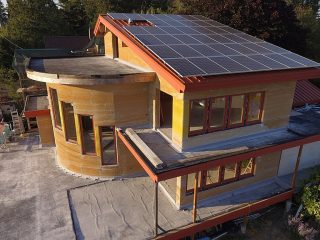Your architect may also be affiliated to a known institute, and as such be referred to as ‘chartered’ architects or members of a professional body. Those who are not affiliated to the RIAI or RIBA may very well be on the register as anyone who meets the requirements should legally be included once they’ve proven their abilities. (In ROI there is currently a debate on whether or not self-trained architects who have been practicing for seven years or more should be allowed to be added to the register without taking an exam.) One of the advantages of membership of a professional body is that the architect is constantly updated on new regulations and other developments and must take part in continuing training to maintain his or her professional competence.
Note that the Royal Society of Ulster Architects (RSUA) is the NI branch of RIBA; when you are a member of RIBA and your architectural practice is based in NI you automatically become a member of the RSUA. However, there are a few NI architects listed with the RSUA who are not members of RIBA; being a ‘chartered’ architect means being a member of either or both institutions. In ROI, RIAI accredited professionals either use the affix MRIAI (for ‘member’) or FRIAI (for ‘fellow’). All RIAI members are on the statutory register while most RIBA and RSUA members are on the ARB’s register – but not all, so make sure you check if they are.
Architects are trained to design all types of buildings so it may be that you choose one who has designed a completely different type of building but in the style that you like. The RIBA, RSUA and RIAI have excellent websites where you can search for an architect based on county, skills or building type. These sites also contain a whole wealth of information relating to choosing your architect; the RIAI website even includes ‘20 Questions to ask yourself before you get started on your project’ and RIBA publishes a very useful Domestic Project Pack as well as a free, and very informative, guidance document called ‘It’s Useful to Know’.
In Ireland architects train for a minimum of seven years; this includes five years in school, followed by two years of supervised ‘practical experience’ which is completed by an examination in professional practice. An architect’s education covers areas as diverse as the history and theory of architecture, environmental psychology, architectural design, structures, building technology, environmental science, sustainable design, urban design, building economics, regulations, procurement, contract law, project management, ethics and professional practice. During their five years of study they design buildings of increasing size and complexity. Then as graduate trainees they learn how to apply these skills, under supervision, in the real world of architectural practice. It is only after passing the professional practice examinations that they are regarded as competent to practice in their own right and to be admitted to the register.
Architectural Technologist
The description ‘architectural technologist’ without the preface ‘chartered’ is not protected so it is essential that you check the individual is a chartered member of the Chartered Institute of Architectural Technologists (CIAT); it has chartered members with registered practices in NI and ROI. There exist dual members, who have both architectural and architectural technology qualifications, and these are both registered with CIAT and with the ARB and/or RIBA.
Different, but similar to the technologist is the architectural technician. A technician member of CIAT is a TCIAT, someone who is trained to a different level and mostly works within an architectural practice supporting their fellow professionals by producing the working drawings and carrying out other technology-related tasks. TCIAT members are not permitted to offer their services directly to clients.






